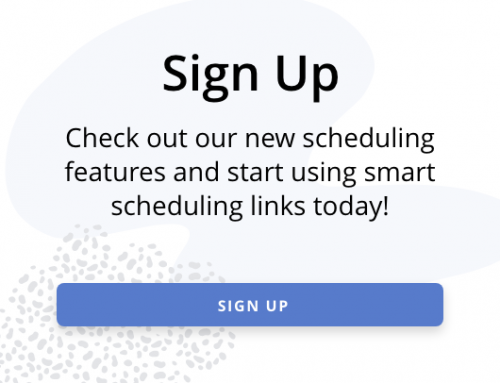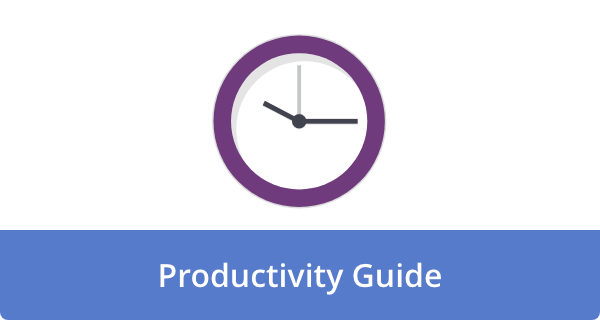

The idea of “time management” probably makes your eyes glaze over. However, some people love calendars, color-coded planners, and detailed to-do lists. For some, though, time management is a burden, an overwhelming task, or just plain boring.
The good news? To manage your time effectively, you don’t need to become a scheduling robot. Rather than sticking with traditional time management, you might benefit from a more flexible, intuitive approach.
Here’s how to manage your time when you hate it.
Why Traditional Time Management Misses the Mark for Many
It can be overwhelming to follow conventional advice, like waking up at 5 a.m., planning every minute, or following rigid routines — especially for creative people and people who thrive on spontaneity. If you’ve ever tried to follow another’s perfect schedule only to abandon it a few days later, you know how frustrating it can be.
The following are some reasons why traditional time management doesn’t work for everyone:
- It ignores energy levels. Throughout the day, your motivation and focus fluctuate naturally
- It’s too rigid. Life is unpredictable. Over-scheduling leaves no room for the unexpected
- It creates guilt. A rigid plan can lead to unnecessary failure if it is thrown off
Controlling every second isn’t the goal. To do what matters, you need structure.
Step 1: Radically Rethink “Time Management”
Managing time isn’t about doing more, but doing what matters. Instead of packed schedules, consider;
- Managing your focus. Your attention should be directed towards what’s truly important.
- Protecting your energy. Make sure you have enough fuel for the important tasks.
- Making space for what you value. Whether it’s creative work, family time, or simply taking time to reflect, align your actions with your deepest priorities.
As a result of this mindset shift, you can approach time management with less resistance and more intention.
Step 2: Embrace Micro-Changes — Start Ridiculously Small
When people attempt to “get organized,” they make the mistake of overhauling their whole life at once. It’s unsustainable.
Make micro-changes instead:
- Set one priority per day. You don’t need a sprawling to-do list. Pick just one thing that, if accomplished, would make you feel accomplished. By doing so, you build momentum and reduce overwhelm
- Time-block one chunk. You don’t have to plan every hour. Spend just one specific period of time, say, 60 or 90 minutes, on a critical task or deep work. You can make significant progress if you protect this one block without feeling restricted
- Batch similar tasks. Continually switching between tasks (emails, calls, creative work, and administrative duties) drains your mental energy. Instead, batch similar activities together. You can, for instance, designate time for “email hour” and “errand sprint.” This eliminates context-switching fatigue
With just minor changes, you can make a big difference without a total personality change.
Step 3: Decode Your Natural Rhythms
Those who dislike time management often feel out of sync with rigid schedules. The reason is that they are operating against the natural flow of their energies.
You might want to spend a few days observing;
- When do you naturally feel most alert, focused, and mentally sharp? Does it happen first thing in the morning, late at night, or sometime in between?
- When do you hit your energy slump? Are you prone to procrastination, drained, or distracted?
- When are you most creative or open to new ideas? Your “focused” time might be different from this.
You may find that your best performance occurs at 10 a.m., you hit a wall at 3 p.m., and you get a second wind at 8 p.m. With this knowledge, you can schedule key tasks accordingly without micromanaging.
Step 4: Embrace “Flexible Structure” Over Rigid Schedules
When planning your day feels overwhelming, try using a loose structure instead of rigid blocks of time. As an example;
- Morning. During this period, focus your attention on your most challenging tasks, creative projects, or deep-focus work
- Afternoon. Spend this time on administrative tasks, emails, meetings, and lighter tasks
- Evening. Consider using this time for rest, socializing, personal hobbies, or very light, enjoyable projects
Instead of assigning exact times, create “containers” for certain types of activities. In this way, you keep the flow without feeling restricted.
Step 5: Opt for Tools That Don’t Annoy You
Some people love apps, timers, and bullet journals. Others find them irritating or distracting.
If you hate the usual tools, try these minimalist options:
- The index card method. List your top three priorities for the day on an index card. Be sure to carry it with you. Check things off as you go. It’s a simple, visual way to stay focused
- Sticky notes. For each task, use a sticky note. Place it somewhere that’s visible. Once you’re done, crumple it up and throw it away. Discarding completed tasks provides satisfying, visual progress without using any digital tools
- Verbal check-ins. You may only need external accountability in some cases. If you have a primary goal for the day, tell a friend, coworker, or accountability buddy about it. You’ll be more motivated to update when you know someone’s looking for it
- A simple notebook. Using a blank notebook, you can write down tasks as they come to mind and then cross them off as you finish them. There are no rules, no elaborate systems, just a place to capture and release information
Not the trendiest tool, but the one you’ll use.
Step 6: Embrace “Good Enough” Time Management
Perfectionism is one of the reasons people give up on time management. When you feel like you must do it perfectly, you’ll quit as soon as you fall behind.
Instead, aim for “good enough.”
- Flexibility is key. There are some days when you’ll nail your loose plan, and there are some days when you won’t. It’s not just okay; it’s expected
- Small wins count. Even if you accomplish just one meaningful thing, that’s a win. It’s worth celebrating
- Progress over perfection. Rather than an unblemished record, the goal is steady, incremental progress. As a result, guilt is drastically reduced, and a spiral into “Why bother if I failed?” is prevented
With this mindset, you can reduce your guilt and keep yourself from spiraling into “I failed, so why bother” mode.
Step 7: Strategically Build in Buffer Space
Adding white space or buffer time between commitments is an easy fix if you feel rushed or behind.
- Between commitments. Instead of scheduling back-to-back meetings, allow 10-15 minutes between them. This is a good time to stretch, grab water, process the last meeting, or mentally prepare for the next one
- Shorter work blocks. Rather than scheduling full 60-minute work blocks, schedule 50-minute blocks. For unexpected interruptions, the extra 10 minutes act as a mini-break or buffer
- Unscheduled pockets. Create open space on your calendar for breaks, thinking time, resolving spontaneous problems, or simply catching your breath
By creating buffer space, time management becomes more flexible, less stressful, and less tedious.
Step 8: Make It Visual (If Your Brain Works That Way)
Visuals can help engage individuals who resist traditional lists and linear schedules.
- Whiteboards or large sticky notes. Using a whiteboard, sketch out your priorities or phases for the week. For different types of tasks, use different colored markers. Compared to a dense list, a visual overview can be less intimidating.
- Physical “done” pile. Keep a physical spot where completed tasks (such as sticky notes) can be stored (a basket, a box). The sight of a growing “done” pile is incredibly motivating and provides evidence of your progress.
- Mind maps for projects. If you’re working on a project or need to accomplish a daily task, use a mind map instead of a linear outline. Connect ideas visually, so that your brain perceives relationships rather than just items on a list.
Don’t be afraid to embrace visual thinking if it’s your thing.
Step 9: Infuse Your Day with Rewards
Humans tend to stick with things that feel rewarding. As such, it’s possible to manage your time in a fun and enjoyable way. For completing tasks or reaching mini-milestones, you should integrate small, immediate rewards:
- Movement break. Have you completed a task? If so, go for a 5-minute walk.
- Guilt-free entertainment. Has your top priority been completed? Spend 15 minutes watching a favorite show or browsing non-work websites.
- Sensory treat. Consider rewarding yourself with a cup of tea, dark chocolate, or some music.
The more you can game your day, the more likely you will follow through, especially if you are internally resistant to structure.
Step 10: Focus on What You Gain, Not What You Lose
Most people dislike time management because they believe it reduces their freedom. Smart time management, however, gives you more independence;
- More time for what you truly care about. When you manage your focus, you have more time for hobbies, relationships, and personal pursuits.
- Less stress and rush. You no longer have to worry about last-minute scrambles or being perpetually late.
- Greater agency. Knowing your capacity gives you the confidence to say “yes” to what aligns with your values and “no” to what does not.
- Reduced decision fatigue. By having a general plan, you spend less time deciding “what’s next.”
As long as you see time management as a tool to gain control, rather than losing flexibility, it is much easier to adopt.
Final Thoughts: You Don’t Have to Love It—Just Make It Work for You
To benefit from time management, you don’t have to love it. Simply find an approach that fits your personality, values, and lifestyle.
Forget perfection or rigid rules. Focus on your priorities, start small, and stay flexible.
No matter how much you hate time management, with a few tweaks, you can get back control of your life.
FAQs
Isn’t “time management” just for highly organized people?
Seriously, no. Time management is for those who want to do and be better with their responsibilities. You can do this. Give yourself some grace and a little time to get it. Start small.
Instead of focusing on innate organizational abilities, this approach focuses on finding a system that works for you.
I’ve tried other systems and always failed. Why will this be different?
It emphasizes starting small and listening to your natural rhythms. It’s not about a complete overhaul overnight, which often leads to burnout and guilt. In contrast, it encourages gentle experimentation, good-enough progress, and using tools that aren’t irritating.
What if my job demands a strict schedule?
These principles can be applied even in demanding environments. Use micro-pauses for mental resets, and build buffer time between meetings. By creating flexible structures within rigid frameworks, you can maintain your own well-being.
How do I stop feeling guilty when I deviate from my plan?
The key is to adopt a “good enough” mindset. It’s important to recognize that life is unpredictable and that plans are guides, not unbreakable laws. Also, it’s a win if you get one meaningful thing done. Rather than striving for perfection, celebrate progress. Instead of giving up, this mindset reduces guilt and encourages you to get back on track.
How long will it take for these methods to feel natural?
It takes time to build new habits. So, be patient with yourself. At first, you might feel awkward or forget things. It is more important to focus on consistency than intensity. If you consistently apply even one or two of these strategies, you should notice a significant improvement in your stress levels, focus, and overall sense of control.
Image Credit: Anna Tarazevich; Pexels











John Rampton
John’s goal in life is to make people’s lives much more productive. Upping productivity allows us to spend more time doing the things we enjoy most. John was recently recognized by Entrepreneur Magazine as being one of the top marketers in the World. John is co-founder of Calendar.